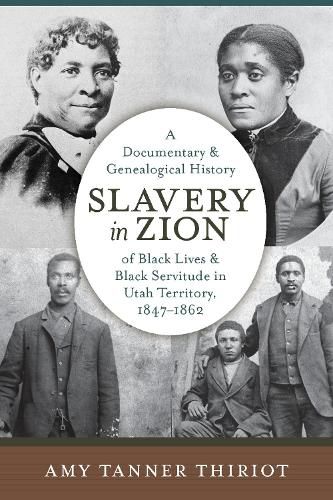Readings Newsletter
Become a Readings Member to make your shopping experience even easier.
Sign in or sign up for free!
You’re not far away from qualifying for FREE standard shipping within Australia
You’ve qualified for FREE standard shipping within Australia
The cart is loading…






An Akan proverb says, It is not wrong to go back for that which you have forgotten. This belief underlies historian Amy Tanner Thiriot’s work in Slavery in Zion. The total number of those enslaved during Utah’s past has remained an open question for many years. Due to the nature of nineteenth-century records, particularly those about enslaved peoples, an exact number will never be known, but while writing this book, Thiriot documented around one hundred enslaved or indentured Black men, women, and children in Utah Territory.
Using a combination of genealogical and historical research, the book brings to light events and relationships misunderstood for well over a century. Section One provides an introductory history, chapters on southern and western experiences, and information on life after emancipation. Section Two is a biographical encyclopedia with names, relationships, and experiences. Although this book contains material applicable to legal history and the history of race and Mormonism, its most important goal is to be a treasury of the experiences of Utah’s enslaved Black people so their stories can become an integral part of the history of Utah and the American West, no longer forgotten or written out of history.
$9.00 standard shipping within Australia
FREE standard shipping within Australia for orders over $100.00
Express & International shipping calculated at checkout
An Akan proverb says, It is not wrong to go back for that which you have forgotten. This belief underlies historian Amy Tanner Thiriot’s work in Slavery in Zion. The total number of those enslaved during Utah’s past has remained an open question for many years. Due to the nature of nineteenth-century records, particularly those about enslaved peoples, an exact number will never be known, but while writing this book, Thiriot documented around one hundred enslaved or indentured Black men, women, and children in Utah Territory.
Using a combination of genealogical and historical research, the book brings to light events and relationships misunderstood for well over a century. Section One provides an introductory history, chapters on southern and western experiences, and information on life after emancipation. Section Two is a biographical encyclopedia with names, relationships, and experiences. Although this book contains material applicable to legal history and the history of race and Mormonism, its most important goal is to be a treasury of the experiences of Utah’s enslaved Black people so their stories can become an integral part of the history of Utah and the American West, no longer forgotten or written out of history.